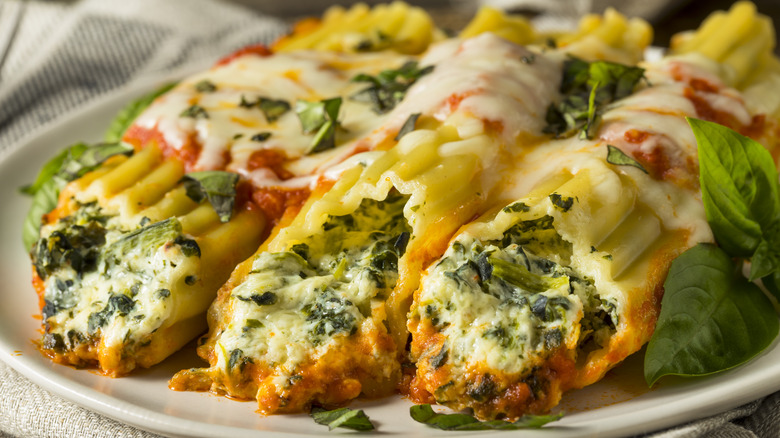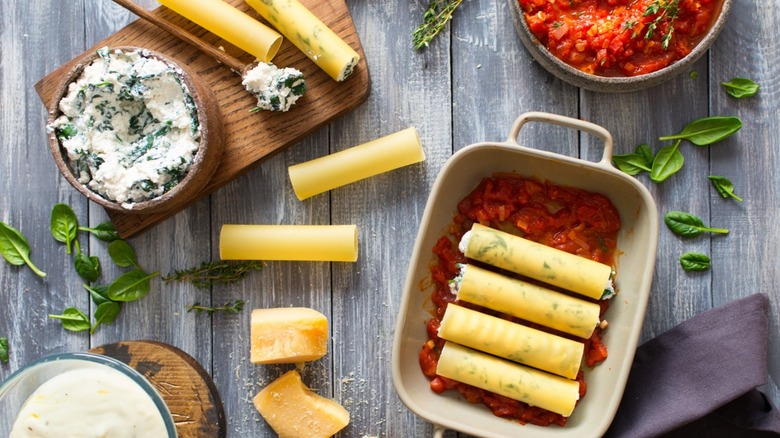Why It's Crucial To Undercook Pasta When Making Baked Manicotti
Just as saucy and hearty as lasagna but without the hassle of carefully layering noodles and filling, manicotti is a great alternative. Part of the pasta al forno family, Share the Pasta explains that manicotti is a dish made of long, tubular noodles that are often stuffed, covered in sauce, and baked. Seemingly effortless to make, there are a few tips for making the best baked manicotti, especially when cooking the pasta.
An Italian term that translates to "a big sleeve," DeLallo shares that manicotti is actually an Italian-American riff on the Italian stuffed-and-rolled pasta known as cannelloni. While both can be made from scratch, often dried manicotti shells have ridges, unlike smoother cannelloni noodles, per Cafe Delites. Interestingly, La Cucina Italiana notes that there's also another similar pasta dish known as crespelle that swaps thick noodles for much thinner, crêpe-like sleeves.
Regardless of what you call them, manicotti is a blank slate for culinary creativity. The noodles can be loaded with sautéed seasonal vegetables, a blend of cheese, or even savory braised meats before being smothered in anything from a simple red sauce to a creamy béchamel. Although there are no rules as to which ingredients can be used when preparing manicotti, the one non-negotiable in any recipe is that the pasta should always be undercooked, and here's why.
The pasta continues to cook as it bakes
Before manicotti can be filled, many swear by cooking the pasta ever so slightly. The main reason for doing this is that it eliminates the risk of raw noodles while ensuring that the pasta maintains its shape. Rather than cook the noodles fully, Barilla recommends only boiling manicotti for about 7 minutes — approximately 1 to 2 minutes less than the recommended cook time to reach al dente. The pasta will continue to cook after it's stuffed and left to bake in the sauce (via MasterClass).
That said, some even suggest omitting this step entirely. According to The Blade, if manicotti is being prepared in advance, then dried shells can be directly stuffed and sauced without a dunk in boiling water beforehand. Naturally, this no-bake method will guarantee a more al dente noodle, even after the manicotti has spent time in the oven.
Although preventing unpleasant textures is one of the main reasons for undercooking manicotti, there's also a secondary benefit to just barely boiling noodles. SI Lifestyle states that when pasta is cooked to a point where there's still a bit of bite left in it, the noodles actually retain more nutrients and are easier to digest, unlike sticky, overcooked pasta.
So the next time you get to baking manicotti, leave it undercooked — your mouth and stomach will thank you for it.

